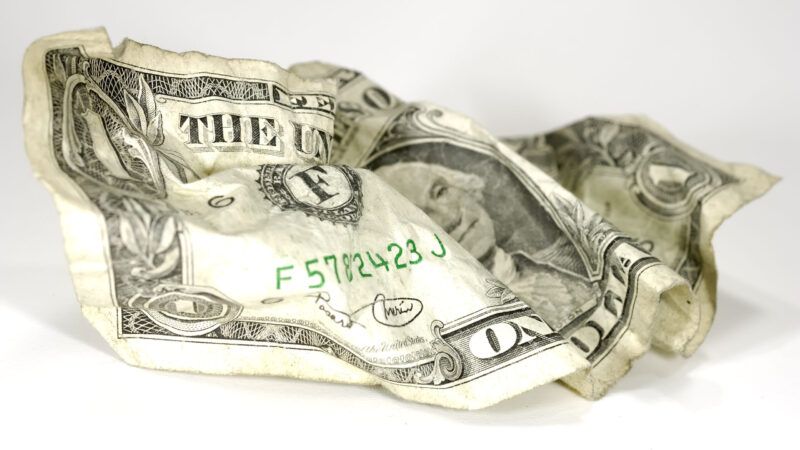Has Inflation Peaked?
The Federal Reserve started the problem, and consumers are paying for the consequences.

The Consumer Price Index (CPI) went up again in May. Over the last year, prices across the economy increased an average of 8.6 percent, up from 8.5 percent in April's year-over-year reading. And yet, inflation might be starting to go down.
The reason for the paradox is that CPI, which tracks price changes in a hypothetical basket of goods, can't tell the difference between price increases due to monetary inflation and price increases due to other causes, such as supply shocks, regulations, or changes in supply and demand. Inflation is what happens when the money supply grows faster than real economic output. The rule of thumb is that if it isn't monetary, it isn't inflation.
May's CPI increase was driven by large increases in energy (34.6 percent), food (10.1 percent), and vehicles (12.6 percent for new ones, 16.1 percent for used cars and trucks). Much of those price increases have little to do with inflation.
Energy prices, for example, spiked due to Russian President Vladimir Putin's invasion of Ukraine. They are staying high because bad policies are making it difficult to adapt, such as the 1920 Jones Act shipping law and restrictions on drilling and fracking. Supply chain difficulties, many made worse by trade barriers and labor regulations, are affecting both food and auto prices. Vehicles are being hit with a triple whammy, with steel tariffs and semiconductor shortages further raising prices. Even used cars are being affected. People priced out of new cars are crowding into the used market instead, driving up demand, and thus prices, there.
None of those price increases are from inflation, because none of them involve the amount of money in circulation. Yet, they still show up in CPI. Fortunately, the Bureau of Labor Statistics also calculates a Core CPI. This is identical to regular CPI, but with food and energy removed from the basket of goods. The thinking is that volatile food and energy prices contain a lot of noninflation noise. Getting rid of them gives a clearer picture of monetary inflation.
Core CPI went down slightly last month, from 6.0 percent year-over-year to 5.9 percent, reflecting the inflation-is-monetary phenomenon.
When COVID hit, the Federal Reserve tried to stimulate the economy with a massive bond-buying program. Its balance sheet more than doubled over the next two years, from $4.1 trillion to $8.9 trillion, which increased the M2 money supply measure by a third. The Fed's actions have lag times ranging from six to 18 months, which is why inflation started increasing last year. Now, a little more than two years later, we are seeing a slight tick down in Core CPI as that torrid monetary growth begins to slow. When the Fed realized it overshot the mark, it eventually stopped the bond-buying program and began increasing the federal funds rate— though this was too little, too late to tame inflation in 2022.
As a result, high inflation should last at least into next year. Republicans are trying to blame President Joe Biden. Democrats are trying to blame everything from Putin to corporate greed. Both are misguided, which is leading them to make misguided policy proposals that threaten to make things worse. Inflation is not a Red Team vs. Blue Team issue; it is a monetary issue. The Federal Reserve started this fire, and they have barely begun putting it out.



Show Comments (204)